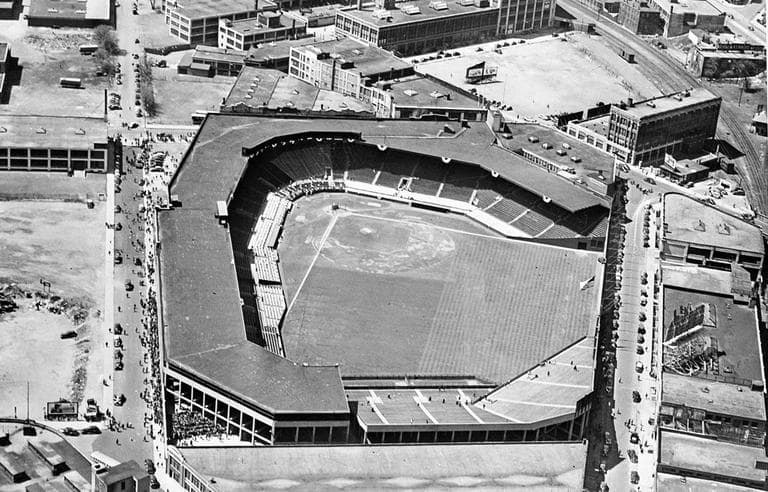Advertisement
Glenn Stout On 100 Years Of Fenway

A new book by Glenn Stout marks the centennial of Fenway Park. It's called "Fenway 1912 — The Birth Of A Ballpark, A Championship Season And Fenway's Remarkable First Year."
The Red Sox won the World Series that year — and Glenn Stout says Fenway Park had a lot to do with that. His story begins with a young, self-trained Irish architect named James McLaughlin — Fenway is the first and only ballpark he ever designed.
Fitting The Ballpark To The City
Despite having never designed a baseball park before, McLaughlin was a well known architect in eastern Massachusetts and several of his armories, civic buildings and schools still stand in Boston.
"Even though it's 100 years old today, it still seems to fit into the fabric of the city."
Glenn Stout
Stout says McLaughlin used the same kind of organic materials to build Fenway Park — like brick — that he used with his other buildings. Stout also points to the scale of stadium as a reason Fenway flows so well in Boston.
"If you look at the office area of Fenway Park on Yawkey Way, where the ticket offices are and the front office is today, that building is only 30 feet tall from the street level," Stout said. "The field is actually sunken down, so from inside the park the grandstand appears much larger. But from the outside it fits the scale of the city."
Boston Before Fenway
"When Fenway Park was first built it sort of looked like Kansas," Stout said.
Before McLaughlin could break ground on Lansdowne Street, Fredrick Law Olmsted had to design the parks that filled in the swampy Fenway area. Because this area had just been filled in, Stout says there were not only no other buildings surrounding Fenway Park — only a few parking garages — there were not even any trees.
"Fenway Park was not crammed into these narrow streets, and that's why it's mis-shapen and small," Stout said. "The game was so much smaller then, and over time the game grew outward."
In fact, Stouts says it was a common belief at the time that there was no way someone was going to hit the ball over the fence.
"Boston fans were initially stunned by the size of [Fenway Park,]" Stout said. "They couldn't believe how big the grandstands were."
But after only a few games, the builders realized their brand new ball park was too small. So the 1912 Red Sox went on a two-week road trip while McLaughlin and his team added an additional 11,000 seats.
Advertisement
The "Greatest" World Series Ever Played
The 1912 World Series opened with a tie game between the heavily favored New York Giants and the Boston Red Sox. The players soon realized that this would mean an extra game — but no extra money. Glenn Stout says the baseball players were so angry about the snub that that they almost went on strike during the series.
"The team ended up in complete disarray," Stout said. "They had trouble getting along because they were split along sectarian lines."
Members of the Knights of Columbus, the Catholic players, did not mingle with the Masons, who were Protestant.
"In another game, the Royal Rooters, the big fan group, their seats were sold out from under them, so they rioted on the field before the game," Stout said.
Police on horseback had to be brought in to drive the rioters from field so that game seven could begin.
Even though Boston won game eight of that series, the fans were so dismayed at the recent events that Fenway was only half full.
This segment aired on April 16, 2012.